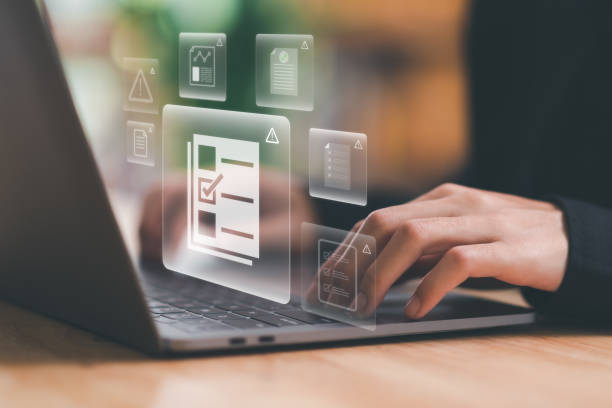What is an artificial intelligence robot and what are its uses?
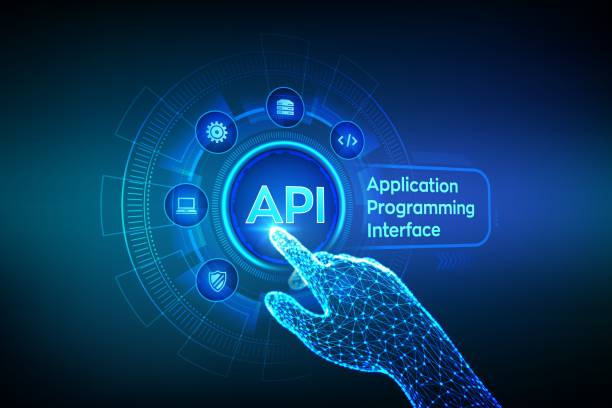
What is an artificial intelligence robot and what are its uses
#AI Robot is a combination of robotics and artificial intelligence that allows machines to perform tasks that typically require human intelligence.
These robots can learn, reason, solve problems, and even make decisions.
The applications of AI robots are vast and include various industries including manufacturing, healthcare, customer service, and even entertainment.
These robots are used on production lines to perform repetitive and precise tasks, in hospitals to assist surgeons in complex operations, and in call centers to answer customer questions.
Artificial intelligence robots also play a key role in the development of self-driving cars, where the ability to process data and make quick decisions in various situations is critical.
Smart robots are able to interact with humans in a more natural way using machine learning and natural language processing (NLP) algorithms.
This interaction can include understanding voice commands, answering questions, and even making suggestions.
For example, service robots in hotels can help guests carry luggage, order food, and provide hotel information.
Are you frustrated with the low conversion rate of your online store? Rasaweb will turn your online store into a powerful tool for attracting and converting customers!
✅ Significantly increase the conversion rate of visitors to buyers
✅ Excellent user experience to increase customer satisfaction and loyalty⚡ Get a free consultation from Rasaweb!
Main components of a smart robot
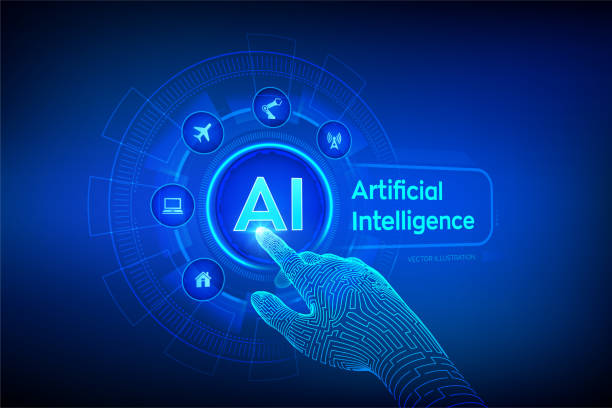
Main components of a smart robot
A smart robot consists of several main components that work together to enable the robot to perform various tasks.
These components include:
- Sensors Sensors collect information about the surrounding environment.
This information can include images, sounds, temperature, pressure, and location.
Sensors act as the robot’s eyes and ears and allow it to interact with the world around it. - Processor The processor is the brain of the robot and is responsible for processing information received from the sensors.
The processor analyzes information and makes decisions using artificial intelligence algorithms. - Actuators Actuators allow the robot to move and perform physical actions.
Actuators can include motors, pumps, and pneumatic systems. - Software Software includes artificial intelligence algorithms and control programs that determine the robot’s behavior.
The software tells the robot how to process information, how to make decisions, and how to move. - Power source The power source provides the energy needed for the robot to function.
The power source can include batteries, fuel cells, or a direct connection to electricity.
The interaction of these components enables the artificial intelligence robot to perform complex tasks and interact effectively with its environment.
Types of artificial intelligence robots based on application
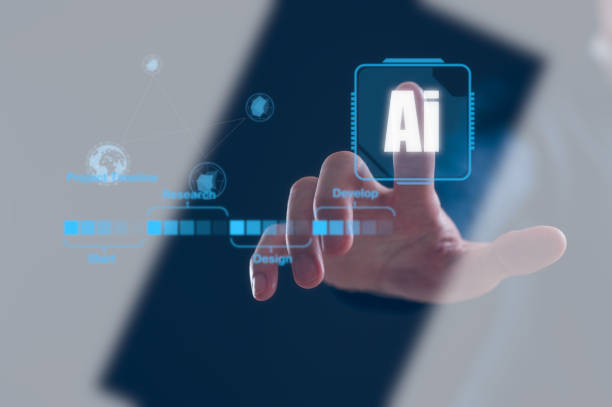
Types of artificial intelligence robots based on application
Artificial intelligence robots are divided into different categories based on their various applications.
Some of these categories include:
- Industrial robots These robots are used in factory production lines to perform repetitive and precise tasks.
They can perform welding, painting, packaging, and assembly of parts with high speed and accuracy. - Medical robots These robots are used in hospitals and medical centers to assist surgeons in performing complex operations, delivering medications, and caring for patients.
Surgical robots can increase the accuracy of the operation and reduce patients’ recovery time. - Service robots These robots are used in hotels, restaurants, and shopping centers to assist customers.
They can welcome guests, take food orders, and provide information about products and services. - Military robots These robots are used in armies to perform dangerous and difficult tasks such as bomb disposal, target identification, and patrolling.
Military robots can save soldiers’ lives and increase the efficiency of military operations. - Space robots These robots are used in space to explore planets, repair satellites, and build space stations.
Space robots can perform well in harsh space conditions and send valuable information back to Earth.
Each category of these robots has specific features and capabilities that make them suitable for performing their specific tasks.
| Robot Type | Application | Example |
|---|---|---|
| Industrial | Performing repetitive and precise tasks on production lines | Welding robot, paint spraying robot |
| Medical | Assisting surgeons, delivering medications, caring for patients | Da Vinci surgical robot, dispensing robot |
| Service | Assisting customers in hotels, restaurants and shopping centers | Reception robot, waiter robot |
| Military | Performing dangerous and difficult tasks in armies | Bomb disposal robot, reconnaissance robot |
| Space | Exploring planets, repairing satellites, building space stations | Mars rover, satellite repair robot |
Challenges and limitations of smart robots
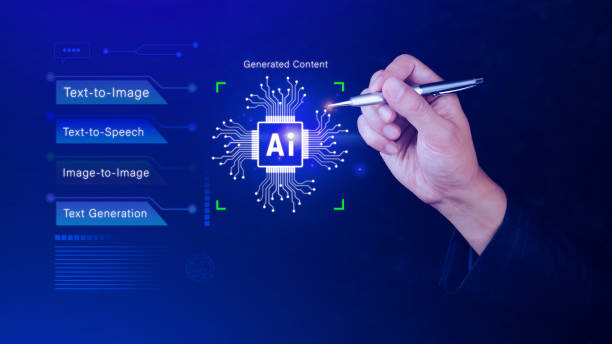
Challenges and limitations of smart robots
Despite significant advances in robotics and artificial intelligence, smart robots still face numerous challenges and limitations.
Some of these challenges include:
- High cost Developing and manufacturing smart robots requires a lot of investment.
The high cost of parts, software, and specialized manpower prevents the rapid expansion of the use of these robots in some industries. - Complexity The design and construction of smart robots is very complex and requires a high level of knowledge and expertise.
This complexity makes it difficult to repair and maintain these robots. - Security Smart robots can be vulnerable to cyber attacks and steal sensitive information.
Also, self-driving robots can pose serious risks to humans in the event of a failure. - Ethics The use of smart robots in some cases can raise ethical issues.
For example, the use of military robots can lead to reduced accountability in warfare. - Employment The increased use of smart robots can lead to job losses in some industries.
This has raised concerns about the future of human jobs.
Addressing these challenges and limitations requires the joint efforts of researchers, industrialists, and policymakers.
Are you tired of your online store having visitors but no sales? Rasaweb solves your main problem by designing professional online stores!
✅ Significantly increase sales with targeted design
✅ Perfect user experience for your customers
⚡ Get free consultation!
What will be the future of artificial intelligence robots?

What will be the future of artificial intelligence robots?
The future of artificial intelligence robots is very bright and full of potential.
With the increasing advances in artificial intelligence and robotics, robots are expected to play a much more important role in our lives in the future.
Some of the key trends shaping the future of AI robots include:
- Increased intelligence Robots in the future will be able to perform more complex tasks and interact with humans in a more natural way.
They can learn, reason, and make decisions. - Expansion of applications Robots will be used in more industries and fields in the future.
They can help humans in homes, schools, hospitals, and factories. - Cost reduction With increased production and improved technologies, the cost of robots will decrease.
This will make the use of robots more cost-effective for more companies and individuals. - Increased security With the development of security technologies, robots will become more secure in the future and will be protected from cyber attacks and physical hazards.
- Development of humanoid robots Humanoid robots in the future will be able to mimic human movements and behaviors and interact with them in a more natural way.
These robots can be used in areas such as elderly care and children’s education.
Overall, the future of artificial intelligence robots is very promising and this technology is expected to play an important role in improving the quality of human life.
How to build an artificial intelligence robot

How to build an artificial intelligence robot
Building an artificial intelligence robot is a complex process that requires knowledge and expertise in various fields including robotics, artificial intelligence, and programming.
The general steps in building an artificial intelligence robot are:
- Determine the goal First, you must determine the goal of building the robot.
What task is the robot supposed to do? What features should it have? - Design After determining the goal, you must design the robot.
This includes selecting mechanical parts, sensors, actuators, and processor. - Programming Then you must program the robot.
This includes writing control codes and artificial intelligence algorithms. - Construction After programming, you must build the robot.
This includes assembling mechanical parts, connecting sensors and actuators to the processor, and installing software. - Testing After construction, you must test the robot.
This includes checking the robot’s performance in various conditions and fixing bugs.
To build an artificial intelligence robot, you can use various tools and resources.
Some of these tools and resources include:
- Robotics platforms Robotics platforms such as Arduino and Raspberry Pi are powerful tools that help you build and program your robots.
- Artificial intelligence libraries Artificial intelligence libraries such as TensorFlow and PyTorch are collections of ready-made algorithms and tools that help you implement artificial intelligence algorithms in your robot.
- Educational resources There are many educational resources on the Internet and in libraries that help you increase your knowledge in the field of robotics and artificial intelligence.
Building an artificial intelligence robot is a big challenge, but with patience and perseverance you can succeed.
The role of artificial intelligence robots in industry
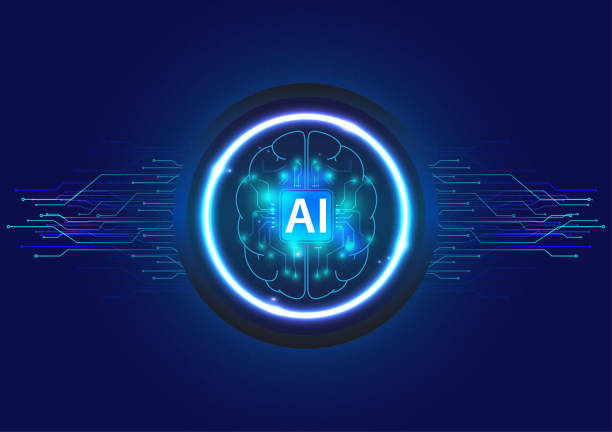
The role of artificial intelligence robots in industry
#Artificial intelligence robots play a very important role in industry and help to improve efficiency, reduce costs, and increase the quality of products.
Some of the applications of artificial intelligence robots in industry include:
- Automation of production lines Robots can perform repetitive and precise tasks on production lines with high speed and accuracy.
This increases production and reduces costs. - Quality control Robots can check products with high accuracy and identify defects.
This increases the quality of products and reduces waste. - Material transportation Robots can automatically transport materials and parts in factories and warehouses.
This reduces transportation time and increases efficiency. - Welding and painting Robots can perform welding and painting with high accuracy and without fatigue.
This improves the quality of work and reduces safety hazards. - Assembly of parts Robots can assemble parts with high accuracy and manufacture complex products.
This increases production flexibility and allows the production of custom products.
With the increasing use of artificial intelligence robots in industry, the efficiency and competitiveness of companies is expected to increase and the global economy will grow.
Industrial automation with artificial intelligence robots is rapidly advancing.
Artificial intelligence robots and the future of jobs

Artificial intelligence robots and the future of jobs
The increasing use of artificial intelligence robots has raised concerns about the future of human jobs.
Some experts believe that robots can replace many jobs and lead to widespread unemployment.
Others believe that robots can create new jobs and help humans perform their tasks more effectively.
In fact, the impact of artificial intelligence robots on the future of jobs is complex and depends on various factors.
Some jobs are more likely to be replaced by robots, while others are less at risk.
Jobs that involve repetitive and simple tasks are more likely to be replaced by robots.
Jobs that involve creativity, problem solving, and interaction with humans are less at risk.
Artificial intelligence robots can play an important role in increasing productivity.
| Job | Likelihood of replacement by robot | Description |
|---|---|---|
| Machine operator | High | Repetitive and simple tasks on production lines |
| Accountant | Medium | Specific parts of accounting are automatable |
| Doctor | Low | Requires specialized skills and interaction with patients |
| Engineer | Medium | Depending on the type of specialization, some tasks can be automated |
| Artist | Low | Creativity and innovation play a key role |
To adapt to the changes caused by the increasing use of artificial intelligence robots, humans must update their skills and prepare for new jobs.
Training in technical skills, problem solving, and interaction with humans can help humans succeed in the future labor market.
#Artificial intelligence robots with increasing progress help to improve work processes
Did you know that 94% of first impressions of a company are related to its website design?
Rasaweb helps you create the best first impression by providing professional corporate website design services.
✅ Create a professional and reliable image of your brand
✅ Easier to attract potential customers and improve online ranking
⚡ Get free corporate website design consultation
Ethical considerations in the use of artificial intelligence robots
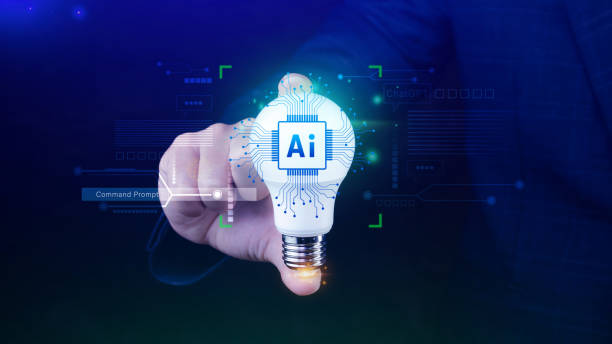
Ethical considerations in the use of artificial intelligence robots
The use of artificial intelligence robots raises many ethical issues.
Some of these issues include:
- Privacy Robots can collect a lot of information about humans and this information can be misused.
- Discrimination Artificial intelligence algorithms can make discriminatory decisions based on their training data.
- Accountability Who is responsible if an artificial intelligence robot causes damage?
- Transparency How can we ensure that artificial intelligence algorithms operate transparently and fairly?
- Control How can we ensure that robots are under human control and do not pose a threat to society?
To solve these ethical issues, there is a need to develop laws and regulations that limit the use of artificial intelligence robots and protect human rights.
Also, there is a need to educate and raise awareness in society about the ethical issues related to artificial intelligence robots.
Artificial intelligence robots have a great potential to help humans, but they must be used responsibly and ethically.
The impact of artificial intelligence robots on everyday life
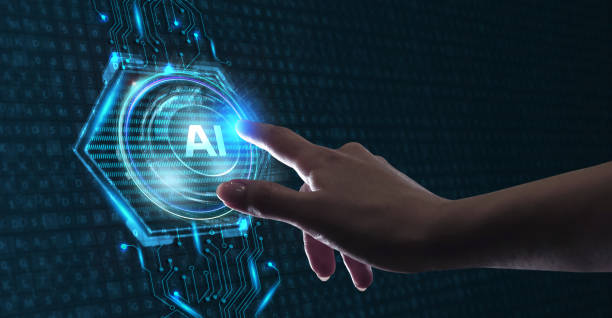
The impact of artificial intelligence robots on everyday life
Artificial intelligence robots are increasingly present in our everyday lives and have a significant impact on various aspects of our lives.
From homes to workplaces, robots help perform various tasks and make our lives easier and more efficient.
- Homes Robot vacuum cleaners, robot lawnmowers, and robot chefs help with household chores and allow us to spend more time on activities we enjoy.
- Transportation Self-driving cars are under development and have the potential to revolutionize the way we travel.
Robots can reduce traffic, increase safety, and help people with disabilities to be more independent. - Healthcare Robots are used in hospitals to assist surgeons, deliver medications, and care for patients.
Robots can increase the accuracy of the operation, reduce patients’ recovery time, and help doctors make more accurate diagnoses. - Education Robots can be used as private teachers, homework helpers, and interactive educational resources for students.
Robots can make learning more engaging and effective. - Entertainment Robots can be used as toys, pets, and performing artists.
Robots can be fun and educational.
With the advancement of technology, artificial intelligence robots are expected to play a more important role in our everyday lives and help improve our quality of life.
This technology is changing the world around us and we must be prepared to accept these changes.
Artificial intelligence robots can help us in doing many daily tasks.
FAQ
| Question | Answer |
|---|---|
| What is an artificial intelligence robot? | An artificial intelligence robot (AI Robot) is a machine capable of understanding the environment, reasoning, learning, and making decisions to perform tasks independently. |
| What is the difference between regular robots and artificial intelligence robots? | Regular robots perform repetitive tasks based on pre-planning, while artificial intelligence robots can learn from experience, interact dynamically with the environment, and even behave in a way that resembles human intelligence. |
| What are the main applications of artificial intelligence robots? | They are used in industries (manufacturing, assembly), medicine (surgery, diagnosis), services (customer support, household), exploration (space, underwater) and many other fields. |
| What technologies are used in the construction of artificial intelligence robots? | Machine Learning, Computer Vision, Natural Language Processing, Deep Learning, and Robotics are among the key technologies. |
| Can artificial intelligence robots have emotions? | Currently, robots do not have emotions in the human sense. They can identify and react to emotions, but they do not experience emotions themselves. |
| What are the main challenges in developing artificial intelligence robots? | Safety, reliability, ethics, autonomy, adaptability to complex environments, and natural interaction with humans are important challenges. |
| How are artificial intelligence robots trained? | They are usually trained using large amounts of data, machine learning algorithms, and deep learning to identify patterns and make decisions. |
| Examples of artificial intelligence robots in everyday life? | Smart robotic vacuum cleaners, customer support chat robots, self-driving cars, and surgical robots in hospitals. |
| Are artificial intelligence robots a threat to human jobs? | Some repetitive jobs may be automated, but at the same time, robots can increase productivity and create new jobs in the development, maintenance, and monitoring of these systems. |
| How is the future of artificial intelligence robots predicted? | They are expected to become smarter, more autonomous, and able to perform more complex tasks and interact more closely with humans in various environments. |
And other services of Rasa Web advertising agency in the field of advertising
Intelligent custom software: Transform SEO ranking improvement with the help of marketing automation.
Intelligent advertising campaign: A dedicated service for customer behavior analysis growth based on custom programming.
Intelligent digital advertising: Professional optimization to improve SEO ranking using custom programming.
Intelligent customer journey map: A fast and efficient solution to improve SEO ranking by focusing on Google Ads management.
Intelligent reporting: Professional optimization to manage campaigns using attractive user interface design.
And more than hundreds of other services in the field of internet advertising, advertising consulting and organizational solutions
Internet Advertising | Advertising Strategy | Advertisement Report
Resources
What is a smart robot and how does it work?
,Can robots eliminate security?
,What is a smart robot?
,The application of artificial intelligence in industry and robotics
? Are you ready for your business to shine in the digital world? Rasaweb Digital Marketing Agency, with a specialized and creative team, offers the best comprehensive solutions including exclusive website design, SEO optimization, and intelligent social media management for your sustainable growth and success.
📍 Tehran, Mirdamad Street, next to the Central Bank, South Kazeroun Alley, Ramin Alley No. 6
“`


